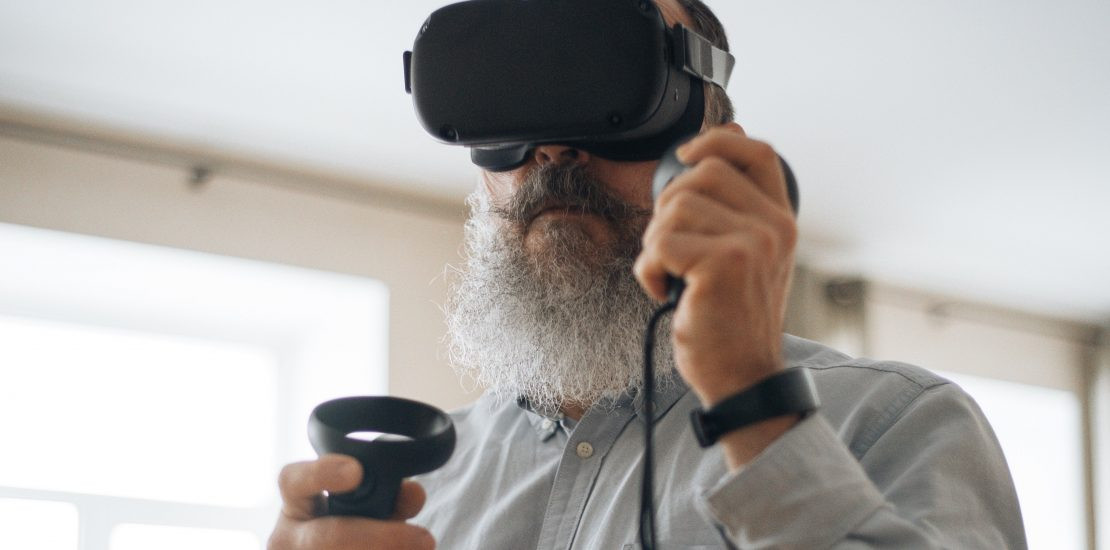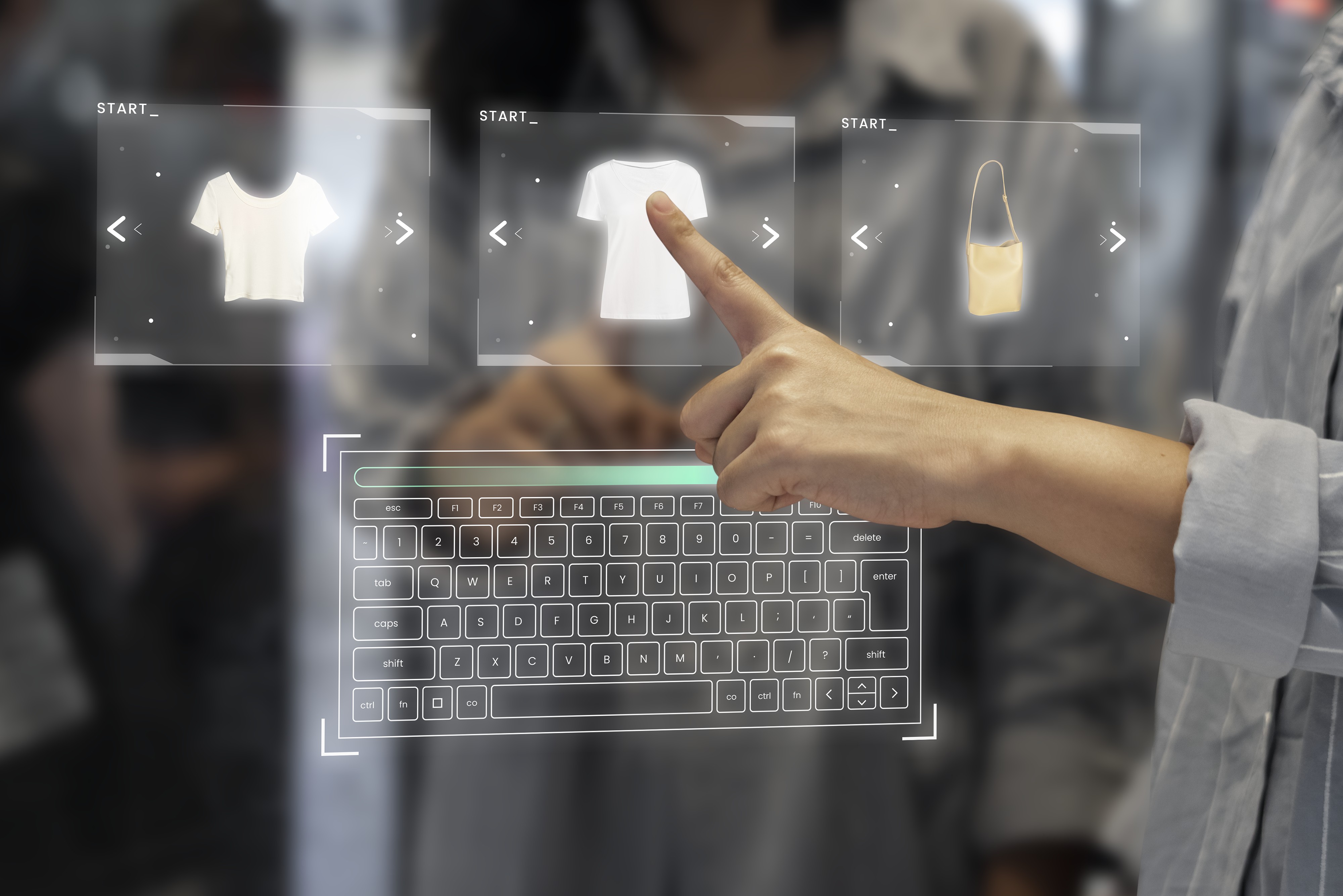Metaverse in the Manufacturing Industry
The term "Metaverse" no longer remains unheard of. Apart from gaming, social networking, remote work, and commercial applications, the use cases of Metaverse for business applications are increasing daily, and manufacturing is not an exception.
As per Bloomberg Intelligence, the Metaverse will increase its value to $2.5 Trillion by 2030.
The manufacturing world is constantly changing, with continuous technological advancements (such as IIoT, 3D printing, cloud computing, AR/VR, etc.) coming their way. Now, immersive virtual environments that can be viewed on any device and operated remotely are the future of the industrial sphere, enabling more meaningful collaborations and user-friendly experiences. Virtual reality and simulations started merely in gaming platforms have advanced themselves to find their utility beyond gaming into manufacturing, shaping the future of factory work. Companies such as NVIDIA (that has created its OmniverseTM platform) and Unity are the perfect noteworthy examples for this case.
How is the Manufacturing Industry evolving with Metaverse?
Manufacturing has always been a 'physical first' world, where digital innovations have enhanced the physical manufacturing space. The Metaverse, however, brings in such applications that will make it a digital-first world, where the factory space will be highly controlled and efficiently managed digitally first and implemented physically afterwards. Below are some of the applications of a metaverse in the manufacturing world.
Virtual Factories:
Virtual factories offer advantages that help the company save time, labour, and cost. While the physical factory will have to shut down to make changes in the factory settings, such as adjusting pressure, temperature, etc., the virtual factory can instantly change these settings without shutting the operations. Some notable examples are:
- In November 2021, a state research institute in South Korea opened a virtual plastic screw factory in a metaverse environment, making it the world's first virtual factory. Using VR glasses, visitors can witness the whole manufacturing process.
- In January 2022, Hyundai Motor Co. announced plans to develop a virtual factory in Metaverse in collaboration with Unity, a US-based real-time 3D content platform.
- Along similar lines, BMW, an automotive car manufacturer, has simulated one of its manufacturing facilities that act as a digital twin of its physical counterpart.
Moreover, the companies can test alternative spacing and layout of various machines on the virtual factory floor to find the optimum floor plan for fast and smooth production. The physical factory costs a lot of time and effort, making it impractical. Floorplanning has become easy and advanced with the emergence of virtual factories.
Digital Twins / Simulations:
Digital twins are real-time virtual representations of a physical object. Many industries use digital twins to collect real-time data and make predictions regarding the performance of the objects. The digital twins market is growing because of the increasing demand for smarter IIoT, predictive maintenance and efficiency. Many companies use these digital twins and simulations to test physical machines, products, and robots. For example, Microsoft has created an Azure digital twins platform that features a live execution environment that enables its users to create digital replicas of physical items. It helps guide and navigate the robots working in the manufacturing space.
According to Lange, SVP of AI at Unity, users in markets like robotics, autonomous driving, drones, agriculture technology, and more are building simulations in a virtual environment with sensors and floor models. These simulations can test, teach, and train robot operators or try physical integrations before real-world implementation. This is all faster, more cost-effective, and safer in the Metaverse.
With better virtual spaces for simulation, it is possible to quickly assess how the existing floor plans and designs will impact the production process and make it better. It ultimately saves the company time and cost in actual physical testing and trial runs. The result is a more rapid production process. BMW is an apt example of this. The Regensburg-based production line has its digital twin in computer simulation for accurate production planning. It helps simulate real physics to make production safer and more efficient without slowing down production. Other companies that have adopted digital twins include Unilever, Boeing, Siemens Energy and Ericsson.
More Rapid and Collaborative Product Development:
The Metaverse combines more real-time 3D modelling tools and the virtual space, accessible to all the stakeholders of the particular project.
- Skyreal, an aerospace-focused software company that started as a helping hand to companies to approach collaboratively in various manufacturing stages, offers services that enable the aerospace teams to work on CAD files in real-time, giving a more immersive experience and better collaborations.
- Autodesk, a software company that helps build digital twins and product designs, buildings, and infrastructure projects in 3D virtual space in an application, is on Kiplinger's list of top 10 metaverse stocks for future technologies.
Other CAD applications and simulation tools make product design and development more collaborative and fast with product design, client feedback, and real-time reworks.
The virtual space also allows companies to test various options of production processes for manufacturing a particular product and find the optimal one before implementing it physically. It saves the company much time, reducing the production's lead time.
The data stored on the cloud platforms, real-time analytics and simulation together can predict system errors or potential defects in the products at various stages beforehand, minimising the rate of errors. This predictive maintenance is highly demanded in the manufacturing world. Apart from saving the company time, it reduces materials and costs. Moreover, Metaverse enables companies to conduct predictive maintenance remotely from their homes.
The automobile companies such as Audi, Ford, Mercedes-Benz. or Toyota, among others, already use virtual reality glasses (Hololens 2) to optimise manufacturing processes and develop products within a mixed reality.
Market Drivers and Futuristic Opportunities
There are various factors, such as rapid advancements in digital twin technology, improvements in production process designing, quality control during production, increase in the number of product designs that will drive growth in the market for Metaverse in the manufacturing realm. Below are a few drivers for this market that we think are noteworthy apart from those mentioned above.
Supply Chain Transparency:
According to the MIT Sloan School of Management, consumers are reportedly willing to pay between 2% and 10% more for products that offer greater supply chain transparency.
More immersive virtual/augmented/mixed reality Technology allows insights into every phase of a particular order as it moves toward assembly, shipping, and finally onto their doorstep. Companies like Alitheon are gradually emerging, which help the client virtually track their order from raw materials to their final delivery. Customers highly demand this kind of transparency throughout the supply chain offered in the Metaverse. It will drive more revenue to the market in the coming years.
Increased Competitiveness:
At a New York State Innovation Summit 2021, the keynote speaker Joshua Ness (Verizon 5G Labs, expert in 5G technology) expressed that Metaverse is the future, and companies must adopt it. If they don't, their competitors will.
With the help of simulations in a metaverse environment, the manufacturers can test thousands of potential options for production processes, factory floor planning etc. and choose the best strategies for their company. Such simulations and rapid production reduce the company's operational costs by removing the need for physical testing of a process or plan to reduce waste from defects. It provides real-time insights into how the equipment performs but can also help predict the results of upscaling or downscaling situations. It also saves time, reducing the time to finish a particular project with all these real-time analytical data and reducing costs and shorter lead time the company a competitive edge in the market.
Increased Safety:
As Metaverse helps manufacturers conduct all kinds of simulations virtually and remotely. Any physical danger to human workers or robots is out of the picture. Hence the safety of the employees is ensured. Moreover, future factories will enable the workers to guide the robots interactively to perform heavy and dangerous tasks remotely from a safe space. Hence, Metaverse in manufacturing offers greater safety.
Launching of Pre-order Campaigns:
This is a potential opportunity for the manufacturers, especially in the automobile (electric vehicle segment) sector, where the product has a long waiting line. An idea is a smart contract on the blockchain that gives customers an NFT of their ordered vehicle. When the product is physically produced and delivered, the customer can use its digital version in the Metaverse. This will drive demand for such vehicles and give the manufacturers early insights into feedback about the performance and identified defects. It can also work in the case of architecture and infrastructure projects of buildings and houses.
Is this the correct time to enter?
The applications and adoption of a metaverse in the manufacturing industry are still developing and have a long way to go. Below are some of the restraining factors that this industry must overcome yet.
- Predictive maintenance, simulations, real-time analytics, and supply chain transparency in a true sense require accurate data. The IIoT and cloud technologies offer proper collection, storage, and maintenance of large chunks of data. To get the most out of metaverses, the manufacturing industry must perform cloud data management more seriously and effectively throughout the supply chain.
- The physical engines and machines must be improved to make them viable for the Metaverse. The machines and robots will have to be enabled with sensors and other technical improvements easily guide and manage them remotely.
- Data warehouse scaling and inventory management is another area in which the manufacturers will have to improve to get the most out of the applications of a metaverse in manufacturing.
The industrial Metaverse can represent each part of the real-world system in the virtual space. It can accelerate and enhance digital transformations in the manufacturing realm of various industries such as automotive, electrical, logistics, textile, designing and many more. Boeing, an aeroplane manufacturing company, has announced that it plans to manufacture its next aeroplane in the Metaverse. Although the company faces challenges in making this plan come true, it provides an account of the long-term vision of the wide-ranging future applications of a metaverse in all kinds of manufacturing industries, including aerospace. According to analyst TrendForce, the industrial metaverse revenue will reach $540 billion by 2025. It is sensible for manufacturing companies to start thinking about the Metaverse in their operations to reap the benefits in the coming decade.
No change will occur in one go as this is still a field where companies explore potential applications by experimenting with the presented opportunity. Only the future will tell how well the Metaverse will be integrated with the manufacturing industry. One certain thing is that it will lead us to the digital-first approach to manufacturing.






